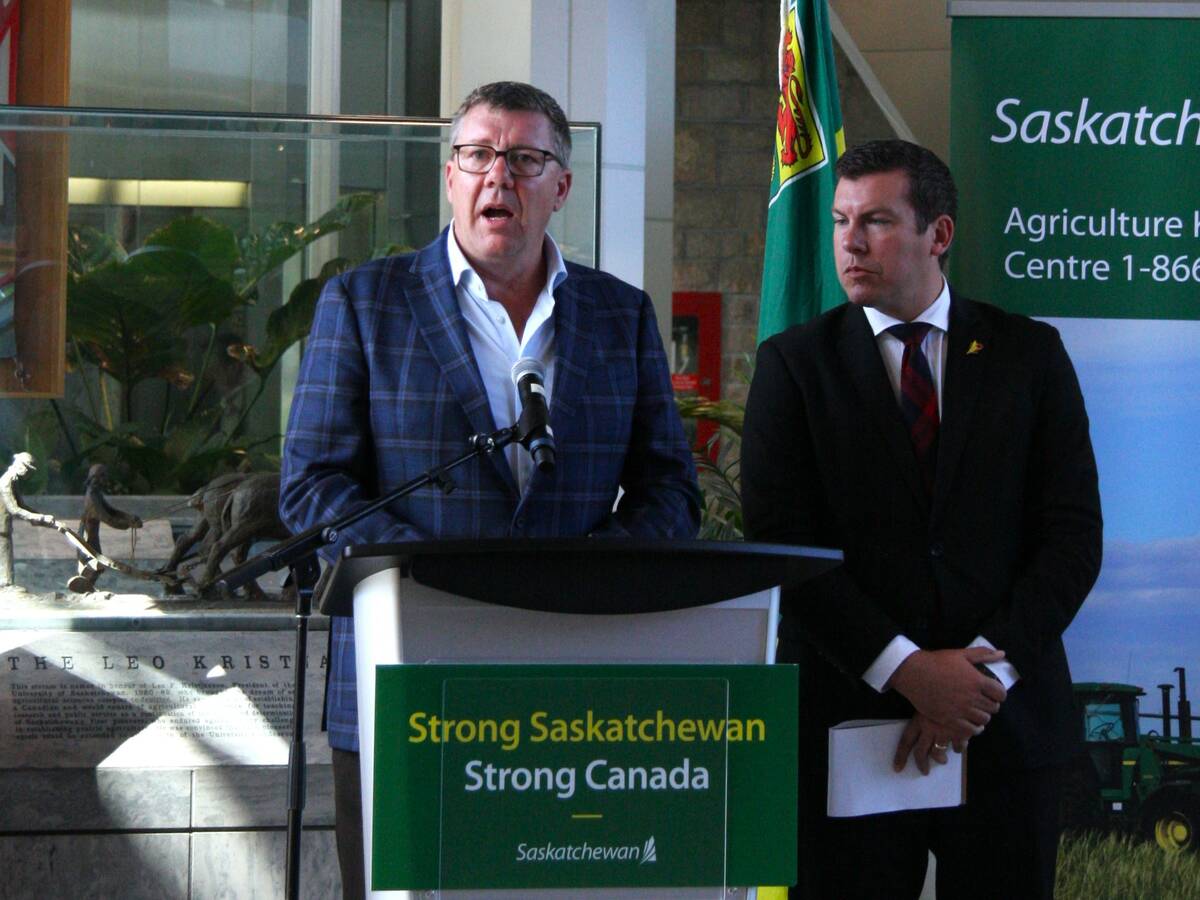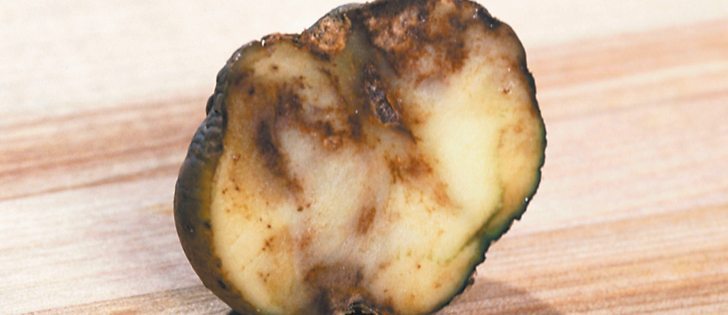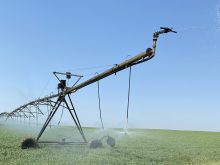Profits melt away | There’s no recovering from late blight once you get it, warns pathologist
A concerted effort has begun in Alberta to raise awareness about the nastiness of late blight in tomatoes and potatoes.
Once an occasional problem in Alberta fields and gardens, late blight infestation has occurred at some level over the last several years, raising concerns among crop specialists and vegetable producers.
“We used to see the disease once in a blue moon, so to speak,” said Alberta Agriculture plant pathologist Michael Harding.
“Every once in awhile the conditions would be conducive, and some inoculum would end up causing some local problems. But we’ve never really had three or four years in a row, like we have recently, where we’ve had significant late blight issues.”
Read Also

Feds promise urgency to address canola tariffs
With Canadian canola growers under new price pressure, federal and Saskatchewan government and industry officials have met to discuss next steps in dealing with China’s canola trade barriers.
Jeremy Carter, technical director with Potato Growers of Alberta, said he and executive director Terence Hochstein calculated that late blight cost producers $12.5 million in extra chemical applications last year.
The inoculum can also wreak havoc on stored potatoes because it favours humid conditions.
“You’ve spent all that money to get that crop in the shed and now it’s melting in the shed. And it really melts. They (potatoes) pour out the door. It’s not pretty,” he said.
“It’s a major disease for potatoes, and we’ve got it here now. We’re wanting to get on top of it.”
PGA is planning grower sessions on late blight this winter. Details will be released later this month.
As well, Harding has held a webinar to educate the public about the disease because anyone who plants tomatoes or potatoes or grows a garden can play a role in controlling late blight.
“It’s designed to let people know that if they have tomatoes, potatoes and even some ornamentals in their gardens, whether they have market gardens or just backyard home gardens … there are some things that all Albertans can do to help us prevent or eradicate this problem,” Harding said.
Late blight spreads by spores on the wind called sporangia, so gardens can infect fields and vice versa.
Harding said evidence indicates transplanted tomatoes are part of the problem. The key is to select disease-free plants and cull any plant that shows late blight symptoms.
“There’s no recovering from late blight once you get it,” said Harding.
“A lot of backyard gardens were lost last year to late blight and in 2010 it was even worse.”
Symptoms include dark brown or black lesions on leaves that are not bound by the leaf veins. Under humid conditions, infected plant leaves will also develop fuzzy white growth on the undersides.
Plants with those symptoms should be pulled, kept in a black garbage bag in the sun for several days and then disposed with other garbage.
All plants should be desiccated and buried if large areas are involved. The spores cannot live long in soil, nor can they live through prairie winters.
Infection of even a few plants can generate thousands of spores, which can travel far on the wind.
“It’s the aerial infections and the airborne sporangia that are really the reason that the epidemics get going ferociously,” Harding said.
Alberta has become known as a clean potato producing region for both processing potatoes and seed. Late blight awareness and control is important to maintaining that reputation, he added.
- The disease is considered one of the most serious potato and tomato diseases worldwide.
- It is caused by fungal pathogen phytophthora infestans.
- It was primarily responsible forthe 1840s Irish potato famine.
- There are protective fungicides but no cure once plants are infected.
- Potato seed treatments are effective in control.
- Eggplant, peppers, petunias and some weeds can be infected.
- It can infect all plant parts, causing rapid death.
- Infective spores travel on wind, by rain or water splash.
- Pathogen can survive on infected potatoes, in cull piles and in volunteer potatoes.
- The disease favours warm, humid conditions.
- Dark lesions on leaves aren’t bound by leaf veins.
- Lesions may have yellow edge.
- Fluffy white growth can be found on lesion edges and leaf undersides.
- Tubers develop reddish brown rot.
- Plant disease-free seed or transplants.
- Bury, freeze or compost diseased plant material.
- Hill potatoes well.
- Avoid over-fertilization to reduce canopy thickness.
- Encourage good airflow around plants.
- Scout early and often.
















